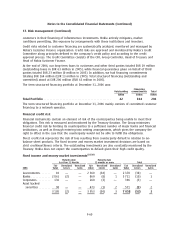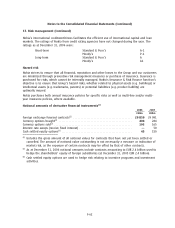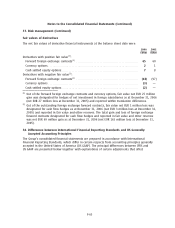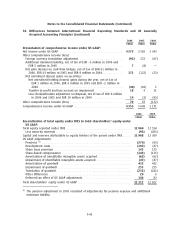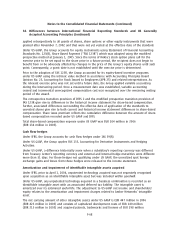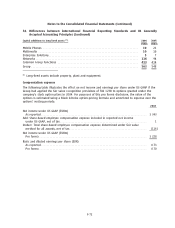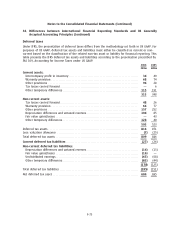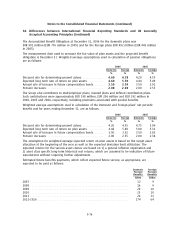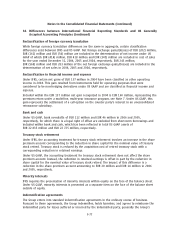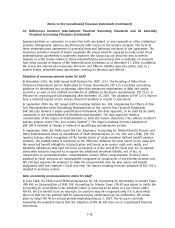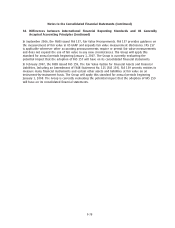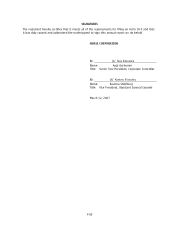Nokia 2006 Annual Report Download - page 205
Download and view the complete annual report
Please find page 205 of the 2006 Nokia annual report below. You can navigate through the pages in the report by either clicking on the pages listed below, or by using the keyword search tool below to find specific information within the annual report.
Notes to the Consolidated Financial Statements (Continued)
38. Differences between International Financial Reporting Standards and US Generally
Accepted Accounting Principles (Continued)
Below is a roll forward of US GAAP goodwill during 2006 and 2005:
Common
Mobile Enterprise Group
Phones Multimedia Solutions Networks Functions Group
EURm EURm EURm EURm EURm EURm
Balance as of January 1, 2005******* 57 5 35 249 9 355
Goodwill disposed ***************** — — — — (9) (9)
Translation adjustment************* 45 — 4 28 — 77
Balance as of December 31, 2005**** 102 5 39 277 — 423
Additions ************************* 51 147 290 — — 488
Translation adjustment************* 29 7 (28) (23) — (15)
Balance as of December 31, 2006**** 182 159 301 254 — 896
Translation of goodwill
Under IFRS, goodwill is translated at the closing rate of the balance sheet date for all transactions
subsequent to the adoption of IAS 21 (revised 2004) as of January 1, 2005. Prior to the adoption of
IAS 21, the Group historically translated goodwill arising on the acquisition of foreign subsidiaries at
historical rates.
Under US GAAP, goodwill is translated at the closing rate on the balance sheet date with gains and
losses recorded as a component of other comprehensive income.
The US GAAP translation of goodwill adjustment reflects cumulative translation differences between
historical and current rates on goodwill arising from acquisitions of foreign subsidiaries.
Other differences
Other differences in the reconciliation of profit attributable to equity holders of the parent under
IFRS and net income under US GAAP of EUR 22 million (EUR 1 million in 2005 and EUR 6 million in
2004) relate to social security cost on sharebased payments, a sale and leaseback transaction, an
adjustment to goodwill and a loss on disposal.
Other differences in the reconciliation of total equity under IFRS to total shareholders’ equity under
US GAAP of EUR 29 million (EUR 6 million in 2005) relate to marketable securities and unlisted
investments, acquisition purchase price, social security cost on sharebased payments, a sale and
leaseback transaction, an adjustment to goodwill and a loss on disposal.
Disclosures required by US GAAP
Dependence on limited sources of supply
Nokia’s manufacturing operations depend to a certain extent on obtaining adequate supplies of fully
functional components and subassemblies on a timely basis. In mobile devices, our principal supply
requirements are for electronic components, mechanical components and software, which all have a
wide range of applications in Nokia’s products. Electronic components include integrated circuits,
microprocessors, standard components, memory devices, cameras, displays, batteries and chargers
while mechanical components include covers, connectors, key mats and antennas. Software includes
various thirdparty software that enables various new features and applications to be added, like
thirdparty email, into our products. In networks business, components and subassemblies sourced
F70


